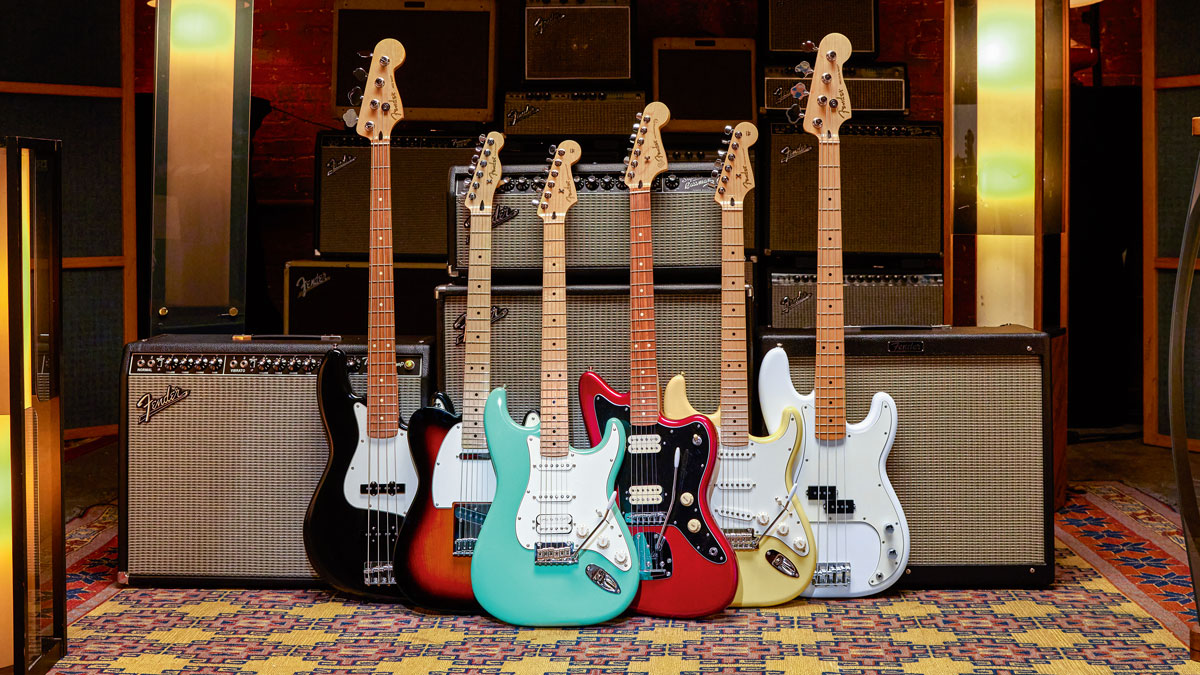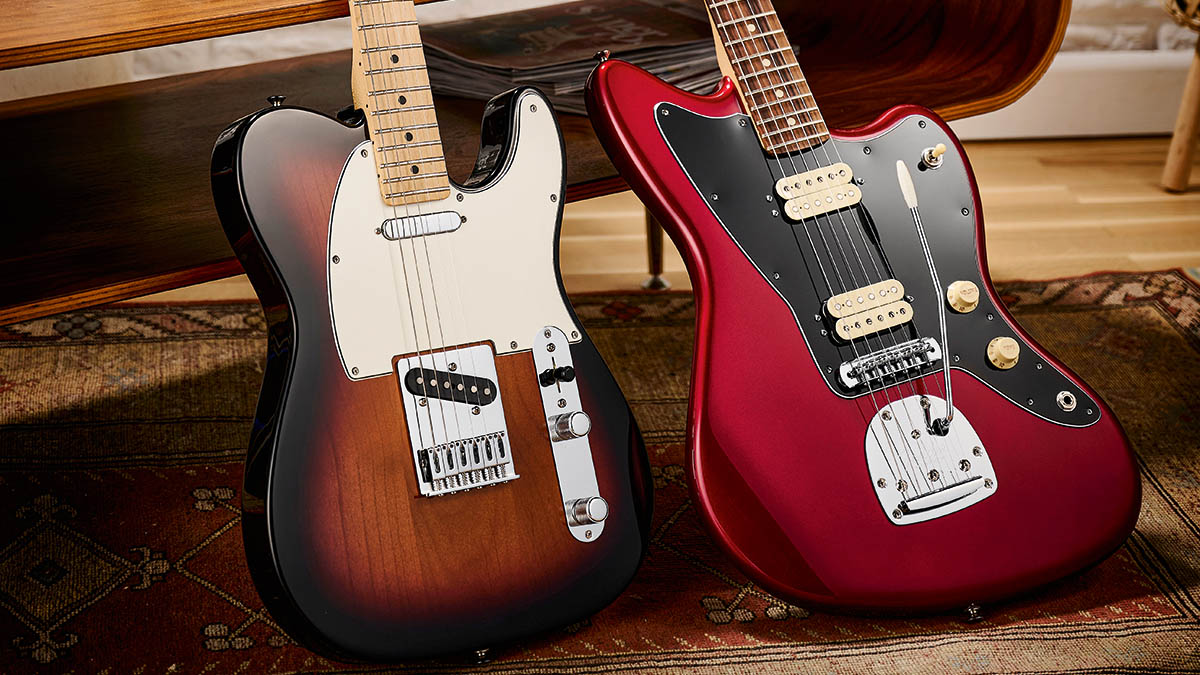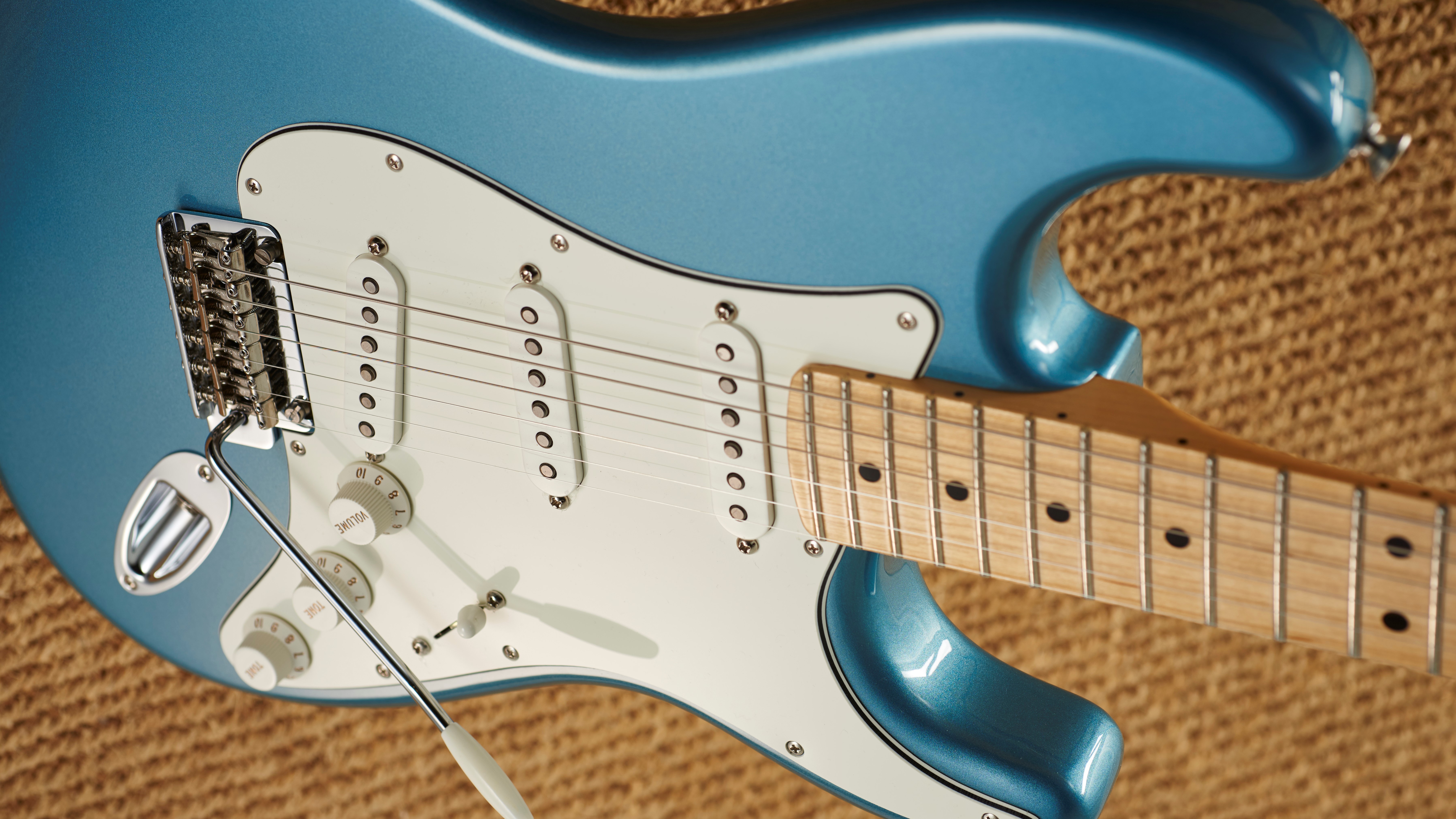
Back in 2018, Fender introduced the Player Series aimed very squarely at guitarists and bass players taking their first steps into the environs of a major brand.
Familiar designs that had been seen in the hands of renowned artists for decades were now available to young players who wanted the classic sounds of their forebears with pro-level spec, including C-profile necks, modern 22-fret fingerboards, upgraded bridges and classic F-stamped neckplates. Another undoubted attraction was that the Player Series sat well below the $/£1k price tag and, most importantly, had that name on the headstock.
During the ensuing five years, the Player Series has gone on to be Fender’s best-selling line, proving popular with a new generation of musicians whom the company continues to nurture and support to this day. The appeal was strong across all genres, too, with newer artists like Turnstile, Beach Bunny and Soccer Mommy leading the charge with their own brand of pop and rock.
2023 sees the introduction of two additional colours into the range – Seafoam Green and Candy Apple Red – and so we invited Allen Abbassi, director of product, to look back over five years of the Player Series and our first question was the thinking behind the range in the first place.

Could you detail the motivation behind the Player Series when it was first introduced back in 2018?
“Prior to the launch, we had the Standard Series at this price point as Fender’s stalwart for probably over 30 years. And the Standard Series itself was a beloved series, it was very popular and it stood the test of time. So, coming around to 2018, we were thinking maybe it’s time to do an update.
“The intent here was to replace the Standard Series with something new and fresh. We had our own vision of where we wanted to go with the Player Series, but because the Standard Series had been around for so long, we had tons of feedback from players, dealers, professionals, artists, and so on, about what they liked and didn’t like. In the end, the goal was to design instruments that have modern appointments, combined with some more traditional Fender cues.

“For example, if you look at the Strats, the Player Series went to 22 frets instead of 21. We use the modern bridge on the Strat – a two-point trem – instead of the six-screw vintage synchronised tremolo that we were using on Standard Series, combining that with an already popular modern C-shape satin back neck.
“This made the Player Series a little more contemporary. But then we also made sure that the body contours were a little bit more dialled into the classic vintage form and we changed the logo of the series back to a spaghetti logo.
“Then, of course, the crown jewel of this series was more traditional Fender-style pickups. The Standard Series had really decent pickups, but they were ceramic magnets.
“With the Player Series, we made a conscious decision to go to Alnico V pickups and actually we used some Alnico II and Alnico III where appropriate to the model, but we were looking for more of that classic Fender tone but with a bit of an edge, a little bit more midrange presence and a little bit more output.
“So the Player Series offers very traditional, vintage-inspired guitars and basses but with more modern, player-centric appointments.”
How did you go about choosing which models would work best and suit the Player Series kind of vibe?
“Well, we knew that the usual suspects, the more popular models in other words, were going to stay: Strat, Tele, P-Bass, Jazz Bass. We had also noticed over the years that the offsets had increased in popularity exponentially. So we definitely knew we wanted to have a Jazzmaster and a Jaguar in there. We eventually added a Jaguar Bass and then folded in and included the Mustang in the Player Series, too.

“We have some pretty good bench strength at Fender with the models like the Jazzmasters, the Jaguars and then the Mustangs. So we definitely wanted to infuse that into this series as well. So the choice was easy for us because we had a stable of models that were either already incredibly popular or growing in popularity.
“We decided to stretch out a little bit and do an HS Jaguar and then an HH Jazzmaster. And that was more to offer something new and exciting to the players. We found that a lot of players in the Standard Series, and then eventually the Player Series line, were a lot of people that were getting into playing guitar or maybe getting their first real Fender so we wanted to make it new and exciting and fresh for those players as well.”

With a catalogue as vast as Fender’s, how would you position the Player Series within the range?
“The Player Series is a new guitarist’s first step into the Fender brand. Up from here is the Player Plus Series with a load of modern features and the Vintera series that reveres the ’50s, ’60s and ’70s. With Player, you’re getting premium hardware.
“The same tuners that we use on American Pro are on the Player guitars. So, as an entry into the Fender brand, you’re getting traditional woods, the upgraded hardware and then the beautifully voiced premium pickups with Alnico V magnets.”

Fender has always had a vast swatch of colours available in all its ranges, some being highly prized, some as representative of the brand. The Player Series has some more unusual colours available – how did you go about choosing the finishes for the series?
“I mean, when we came out with Player, we did all new colours, except for maybe the sunburst – you have to have a sunburst in almost every line because that’s one of the most popular colours. We were able to infuse the Player Series with a lot of new colourways like Tidepool and Buttercream, and then eventually we introduced Capri Orange and Silver in there as well.
You can probably bet that somewhere down the line any series is going to get a little hint at the vintage stuff, colour-wise
“But we know that some of those classic vintage Fender colours are always fan-favourites and so sometimes we like to infuse some excitement into this series by removing some colours and maybe throwing in some of those more traditional colours.
“We’ve just done Candy Apple Red and Seafoam Green – those are very much traditional vintage Fender colours and they work great on the Player Series. So, usually, we like to come out of the gate for a fresh new launch with mostly all brand-new colours, but I think you can probably bet that somewhere down the line any series is going to get a little hint at the vintage stuff, colour-wise.”
We can’t ignore the instruments from Fender Japan in the overall catalogue hierarchy. They are, perhaps, more affordable than the USA output and have their own kind of uniqueness within the range. Where do you think the Player Series stands in comparison with the Japanese guitars?
“You’re right, Japanese guitars are very unique; the guitars have their own vibe, and we love that differentiation. The Japan market absorbs most of the guitars we can make at the factories, so we can’t get enough of most Japanese guitar models to ship globally. The Player Series is set somewhere right under the traditional series in Japan, as far as price point is concerned.
“In Japan, the most popular product is the stuff that’s got a more vintage flavour, like the Traditional Series and the Hybrid Series, which match modern features on vintage models, kind of a hybrid vintage/modern.”
Fender has a long-standing tradition of working closely with artists and this has been extended to the Player Series, too. What sort of feedback are you receiving from the younger players who are using the series?
“Absolutely, the series has utilised a wide range of different players. We’ve had artists like Turnstile, Cherry Glazerr or Japanese Breakfast – all those great artists have used Player. We put the instruments in their hands and we let them choose what they like. But they definitely have feedback for us and we listen to that feedback. Part of the germination of the Player Series was reacting to a lot of that feedback.
“In the Standard Series, we had a lot of artists saying, ‘We love the Standard Series – we’d like to see some pickups that had a little bit more traditional core Fender tone.’ And so we take feedback like that and we apply it to the product development in concert with our own vision for what the instruments are. Just as Leo Fender himself did, we really love working with artists and getting their feedback.”
Many of today’s players are choosing to use pedals as part of their sound and it might be true to say that Fender’s traditional single coils sit with this in a vastly different way than the higher-output humbuckers. Also, there is a definite trend towards a more vintage tone from contemporary pickups. Has this kind of thinking formed part of the feedback you’ve been receiving from players?
“One thing I’ve learned over time is that if you like to use overdrive and a lot of effects, sometimes a lower-output pickup is better suited to handle that kind of environment. Of course, there’s a lot of players that do like more output so they can get a chunkier, heavier distortion. We do offer a lot of different types of pickup, but we never – even with our humbuckers – get to the super-hot realm of resistance on a pickup. We stayed at the medium-to-low end of the range.”
Returning to the rise and fall in popularity of the offset guitar range over the years, what do you think is the reason behind these models’ current in-vogue appeal?
“You know, it’s interesting because I think, up till now, we’ve seen a pretty steady increase in popularity of the offsets, and it doesn’t seem to be waning. Certain models, like Mustangs, usually wax and wane a little bit more than, say, Jazzmasters. For some reason, Jazzmasters seem to be the more popular offset.
There’s been a very steady increase in popularity with the offsets and I have not seen that start to decrease at all
“But we recently did the anniversary of the Jaguar and we did some anniversary models there. And in our new American Vintage series, we removed the Jaguar, and we heard some feedback about that, like, ‘Hey, where did the Jaguar go?’ So I think there’s been a very steady increase in popularity with the offsets and I have not seen that start to decrease at all.
“In the decades past, people started gravitating towards vintage offsets –because if you wanted an older Fender, they were way more affordable. And I think once people started doing that, they just discovered the beauty and the variety of tones you can get out of the offset instruments like the Jazzmaster and the Jaguar.
“And the more models we offered and the more artists that started using them, and the more songs that started to be recorded using offsets, it just increased people’s interest. And that’s just been steadily increasing and I don’t see it stopping right now at all.”
- For more information on the Player Series, head to Fender.com.







